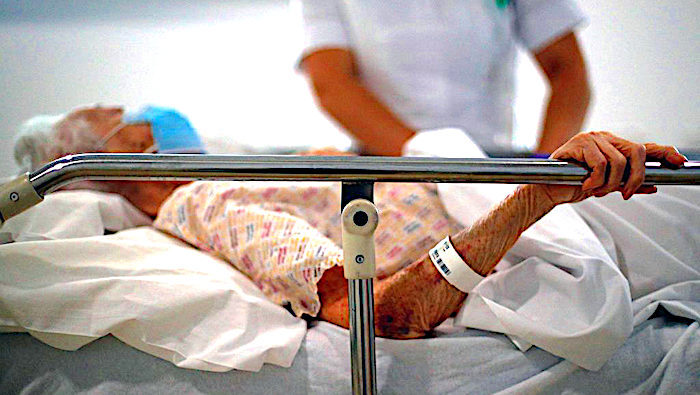The study, published in the Journal of Health Economics in 2022, found that the greater the mitigation efforts in U.S. nursing homes, the higher the death toll during the pandemic. "Those efforts not only largely failed to reduce Covid mortality, but they also added non-Covid deaths. The more they tried to mitigate, the worse the outcome was," notes Prof. Shahar.
"These results are consistent in three consecutive periods: May through September 2020, September through December 2020, and December 2020 through April 2021. Moreover, the relationship between quality ranking and mortality became stronger over time," he adds.
The reason was the non-Covid death toll: "The higher the ranking, the higher the number of non-Covid deaths".
While in the first wave the harsh mitigation measures do appear to have reduced Covid deaths somewhat, this effect was "insufficient" to make-up for the non-Covid deaths associated with a higher ranking. It was also not true for later waves.
The study authors propose the most likely causal explanation: that higher ranked nursing homes imposed stricter - and deadlier - mitigation measures. Prof. Shahar writes:
Quality ranking was a surrogate for adherence to mitigation guidelines. The higher the quality of a nursing home, the more strictly official guidelines were followed. And those guidelines had a wide range of adverse consequences, which the authors describe as "unfortunate downsides to these early policies that could have negatively impacted nursing home resident health".The study authors claim that vaccination helped protect from Covid from 2021 onwards. Looking at their data, Prof. Shahar disputes this:
Citing relevant studies, they specify some of the mechanisms: extreme isolation, which may be deadly in Alzheimer's; unsupervised meals leading to weight loss; a lack of communal activities, which reduced exercise and increased the time spent in bed; and a large decline in regular medical care of frail, elderly residents. These plausible mechanisms are documented in horrific personal stories.
The effectiveness of Covid vaccines against Covid death was temporary and mediocre at best. Most likely, it was near zero or negative in the frail elderly. ... The case fatality rate (CFR) did not decrease during the vaccination campaign. Nor did Covid vaccines reduce Covid and all-cause mortality in that vulnerable population.Prof. Shahar estimates the proportion of excess deaths attributable to the mitigation measures. Making the defensible assumption that the lowest-ranking nursing homes show the level of mortality with no mitigation at all, he calculates that mitigation efforts accounted for "one-third to half of the excess mortality in 12 months".
Notably, the study authors don't try to claim the non-Covid deaths were missed Covid - a common argument from those wanting to exaggerate the impact of the virus. Prof. Shahar goes further and criticises the authors for failing to recognise that around a quarter of 'Covid' deaths were no such thing as they died 'with Covid' from other conditions: "Based on CDC data, about 25% of Covid deaths in the U.S. were misattributed in the first five months of 2021."
With no evidence of net, or even any, benefit, and clear evidence of a devastating death toll, this study's important findings show that even for those most vulnerable to the virus - those who many argue should receive 'focused protection' - mitigation measures do far more harm than good.
It turns out, when a flu-like virus comes along - even a novel(ish) and potentially engineered one - there's still no better response than to keep calm and carry on. And whatever you do, don't jettison dignity, compassion and freedom. It can be deadly.




Reader Comments
Bombs away!
The American bison sure as hell figured it out - they are still alive - but barely and nothing like they once were....when they were a critical aspect of the ecology of the plains on planet Earth in the place called merica.
I pray for lessons to be learned.
Learning the hard way is usually the ONLY way bullies learn.
~
Now - let me hop off this high horse verbiage.I got work to do.
~
ps - I wondered where you "had been" - glad to hear you were walking the trails...
big changes are on the way.
Eventually at some point in time - all bullies get their just due.
That is the optimist way of contemplating present times.
It leads to a better future assuming it remains practical.
So call me a "practical optimist" been around the
block a few times - but refuses to give up on
the human spirit - individual and collective.
Ken
Not all consequences are of this world. But there are always consequences.
[Link] - Resilience by Thomas Newman
Ken
[Link]
I'm actually surprised YT didn't find a way to censor this one.